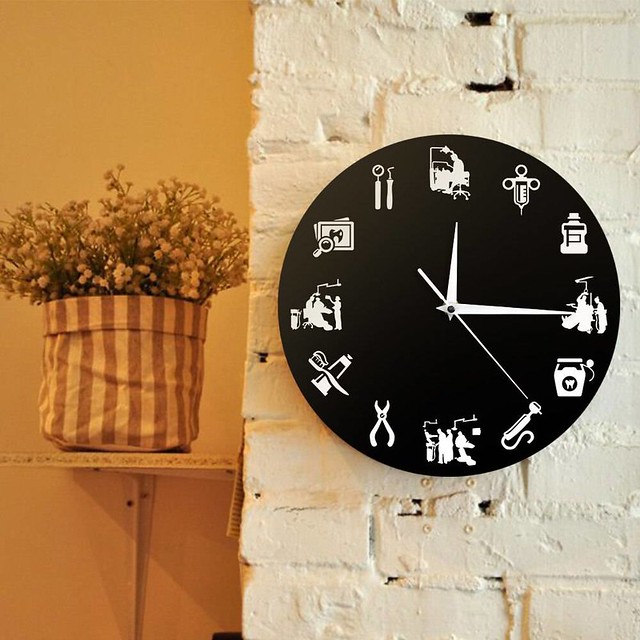For hundreds of years, people have used devices to measure and keep track of time. These ancestors typically used quite a little bit of ingenuity to maintain track of the passing day. The current system of time measurement dates again to roughly 2000 BC and the historical Sumerians. Today it’s very straightforward to keep track of time on numerous gadgets, from cell telephones to tablets and iPads. Check out 15 of essentially the most fascinating forms of clocks. Normally powered by a coiled spring or falling weights, widespread mechanical clock examples embody grandmother, grandfather and cuckoo clocks. A mechanical clock is made from easy mechanical components that aren’t electrical. The accuracy of the clock is dependent upon its construction and the engineering of its elements. A pendulum clock makes use of a pendulum for time dividing. The length of the pendulum determines the time for the pendulum to swing again and forth. This improves the clock’s accuracy as a result of the swinging has a particular property. The pendulum’s weight and arc don’t have an effect on the swinging, resulting in consistent time dividing. An alarm clock is designed to alert a person or group at a specified time. The first function of these clocks is to wake people up within the morning or after naps, however they can be used for different reminders as effectively. Most use sound, though some alarm clocks use light or vibrations. Most alarm clocks stop mechanically after a sure time, or you may manually press a button or handle to stop the alarm. Atomic clocks are calibrated towards the frequency of a resonating atom, often cesium. As a result, they are highly correct. The NIST-FI atomic clock on the National Institute of Standards and Technology in Boulder, Colorado, is accurate to less than a second in more than 60 million years. Stopwatches are used to precisely time events. Because these clocks are expensive scientific instruments, they're used largely in laboratories. In truth, they don’t document the time of day or evening; they merely record how lengthy it takes to perform sure capabilities. Indispensable in races and sporting occasions, some stopwatches can time a number of events. An hourglass measures time by permitting sand or another substance to circulation between two glass bulbs linked vertically by a narrow neck. Some can even track elements of an event along with the whole occasion time. This development allows a regulated trickle from the higher bulb to drop to the decrease one. Hourglasses could also be reused indefinitely by inverting the bulbs as soon as the upper bulb is empty. Elements that affect the time interval include sand coarseness, sand quantity, neck width and bulb dimension. A world clock is a clock that shows the time for various cities world wide concurrently. Some world clocks function an image map of the world embedded with digital or analog displays. Quartz clocks use an electronic quartz crystal oscillator and a frequency divider or counter. It might are available varied varieties, equivalent to a number of round analogue clocks with transferring hands or multiple digital clocks that characteristic numeric readouts. This crystal vibrates when electricity passes via it, and the vibration may be very consistent, leading to a very dependable mechanism for time holding. Utilized in historical instances, a candle clock is a skinny candle with persistently spaced markings. The quartz crystal and electric circuits are referred to as the quartz oscillator, while the crystal’s oscillation is understood as the piezoelectric impact. These clocks provided an effective method to tell time at night, indoors and on cloudy days. When burned, the passage of time is indicated by the extent of the markings. The sundial measures the time of day using the direction of shadows cast by the solar. The Egyptians were the first to make use of sundials, and a effectively-designed sundial can nonetheless measure local photo voltaic time with reasonable accuracy in the present day. As the sun strikes from east to west, the shadows formed tell the time. Such a mechanical clock keeps time with a mechanism known as a torsion pendulum. It consists of a weighted disk or wheel suspended by a skinny wire or ribbon, called a torsion or suspension spring . Nonetheless, it requires the sun to shine and doesn’t work in any respect at night time. The pressure created by the twisting torsion spring reverses the course of rotation. The torsion pendulum rotates across the vertical axis of the wire, twisting it, as an alternative of swinging like a daily pendulum. An astronomical clock is a clock that features particular mechanisms and dials to display astronomical information. This enables the torsion pendulum to oscillate slowly, clockwise and counterclockwise. A pocket watch is made to be carried in a pocket. Consequently, these watches have been the most typical type from the time they had been developed in the 16th century until the arrival of wristwatches after World Struggle I. These watches usually have an attached chain that allows them to be secured to a lapel, waist coat or belt loop to stop them from being dropped. Digital clocks display a numeric representation of time. Two numeric show formats are generally used on digital clocks. These clocks principally use a LED or LCD show in either 12- or 24-hour notations. It exhibits occasions such as the relative positions of the moon, sun, zodiac constellations and sometimes major planets. Analog clocks normally point out time utilizing the angles of the clock hands. The mostly used clock face uses a fixed illuminated digital wall clock numbered dial and transferring hands. The clock normally has a circular scale of 12 hours, which also serves as a scale of 60 minutes.
